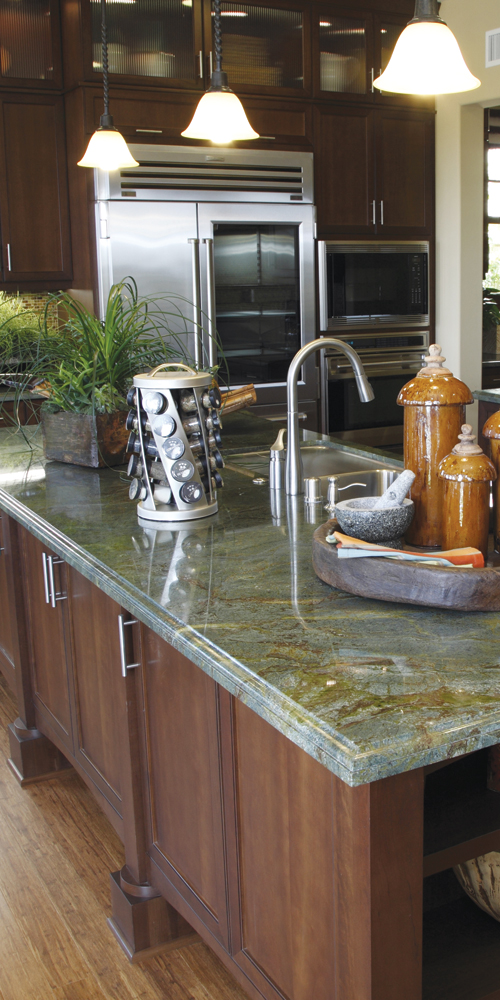 These products are not available for sale outside the
State of Wisconsin
These products are not available for sale outside the
State of Wisconsin
Granite Maintenance Care

daily care and use
For best results, clean your countertop daily with a soft cloth and a neutral, non-abrasive cleaner such as dish soap. Using harsh household cleaners such as Windex®, Lysol® Disinfectant and 409® can be harmful. Keep in mind the more harsh the product, the quicker it will break down your sealer. Avoid using products that contain lemon, ammonia, vinegar or other acids because they may etch the stone. High and low temperatures will not harm your granite; however, if you have a seam in your countertop, it is best to avoid placing hot materials on this area. The epoxy in the seam can melt if exposed to heat for an extended period.
SEALANT
Your granite work surfaces are sealed after the installation by the installer to help prevent the absorption of any compound that can stain the surface. The need to reseal will depend on the type of stone you have and how much use your surface gets. Sealant may need to be reapplied anywhere from 3 to 5 years. If resealing is necessary, concentrate mainly near the sink and cooking areas. To test if the sealer is working, place a few drops of water on your work surface. If the water soaks in quickly, then it is time to reseal. If the water beads up , the counters are protected. Liquid sealer is available for purchase from Halquist Stone.
STAINS AND LIME BUILD-UP
While stains are rare, the best way to avoid them is to wipe up any spills immediately. Do not store bottles of cooking oil, rusty pots, pans or cans directly on your granite as the rust may cause stains on the countertop. The granite may darken when it is wet; however, it will return to its original color when the water evaporates. This may be an indication that resealing is necessary. If lime build-up occurs around your faucet, do not use lime products which can damage the stone. Pour a small amount of pure acetone on the area, (be sure to avoid getting any on the faucet and sink) then gently scrape the lime off with a straight razor. You can also use the flat side of a razor blade to remove stuck-on tape, residue, dried paint, glue, dried food, etc...
Granite is very stain resistant ; however, if a stain occurs, follow these steps for removal: 1. Mix a paste made of baking soda and hydrogen peroxide. 2. Cover the stain with the mixture and flatten to 1/2" thickness. 3. Use clear plastic wrap to cover the poultice and then tape around the edges. 4. Let the poultice sit overnight. The mixture will pull the stain from your granite countertops. 5. Remove the plastic wrap and dried mixture. If only some of the stain has been removed, repeat as necessary. 6. Always test this stain removal method in an inconspicuous location before applying it to a large area.
daily care and use
Granite is extremely hard, but it can be scratched by quartz, diamonds or any other materials harder than itself. Certain stoneware dishes including pizza stones contain rough silica sand and pose a risk of scratching the granite. Use a trivet to ensure that these dishes stay in play while in use. Chips in granite are not common, but do occur. They are most often caused by banging something into the edge of the countertop. Granite is very restorable and most of the time chips can be filled with epoxy to match the granite.